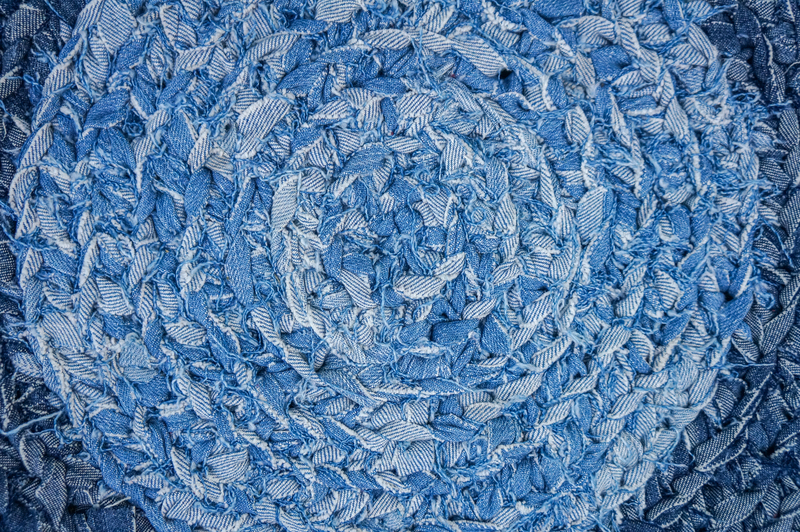Beyond the Clear-Out: Essential Tips for Continuous Clutter Control
Posted on 29/05/2025
Beyond the Clear-Out: Essential Tips for Continuous Clutter Control
Clutter can sneak into our lives, creeping into closets, drawers, and digital spaces. Many embark on decluttering journeys with good intentions, revamping their homes with a massive clear-out. However, staying clutter-free is a continuous process, not a one-time event. In this in-depth guide, we'll explore actionable continuous decluttering strategies to help you sustain order and enjoy an inviting, stress-free living environment every day.
Why Clutter Control is an Ongoing Process
It's easy to assume that a single thorough decluttering session will magically resolve home organization woes for good. However, without ongoing clutter management, possessions and paper will inevitably accumulate again. According to organizational experts, proactive and regular clutter control enhances:
- Mental well-being--a tidy space reduces anxiety and promotes relaxation.
- Time management--less time spent looking for misplaced items.
- Productivity--organized environments enable clearer thinking and increased focus.
- Financial awareness--avoiding accidental repurchases due to lost items.
But how do you maintain this order? It's all about integrating clutter prevention habits into your daily and weekly routine.

Essential Tips for Continuous Clutter Control
1. Adopt the "One In, One Out" Rule
For every new item you bring home, remove one similar item. Whether it's clothing, books, or kitchen gadgets, this simple guideline prevents surplus accumulation over time. By being mindful of how often you acquire new possessions, you'll be more intentional in your purchases and avoid unnecessary clutter.
2. Schedule Regular Mini Declutter Sessions
Instead of waiting for chaos to take over, set aside 10-15 minutes weekly or daily to tackle a specific area. These could include:
- Clearing your desktop or worktable
- Emptying your purse or backpack
- Going through one dresser drawer
- Organizing the bathroom cabinet
These quick bursts prevent overwhelm and keep clutter at bay.
3. Create Designated "Home Zones" for Items
Assign everything a proper storage spot. When every item has a "home", it's easier to tidy up throughout the week. Label baskets for toys, set hooks for keys, and dedicate bins for incoming mail. The more defined your zones, the simpler it is for the whole household to maintain order.
4. Control Paper Clutter at the Source
Paper is one of the most persistent sources of mess. Tame paperwork by:
- Opting in for paperless billing
- Shredding junk mail immediately instead of letting it pile up
- Creating folders for "To File," "To Do," and "To Shred"
- Digitizing receipts and important papers using a scanner app
Make it a habit to process mail and paperwork daily or weekly.
5. Be Ruthless in Editing Your Belongings
Ask yourself regularly:
- When did I last use this?
- Does it serve a genuine purpose or bring me joy?
- Would I buy this again today?
6. Keep a Donation Box Accessible
Place a box or bag in a convenient location, such as a closet or garage, for ongoing donations. As you notice items you no longer need, simply drop them in. When it fills up, take it to your local charity. This low-effort system ensures unused items won't linger for long.
Advanced Continuous Clutter Management Strategies
7. Create Consistent Habits and Routines
Clutter is less likely to accumulate if you build organizational tasks into daily life.
- Morning and evening tidies: Spend 5 minutes in the morning and evening putting things back in their places.
- Family "reset" time: Designate a few minutes before dinner or bed for everyone to join in a quick cleanup.
- Weekly review: Dedicate time once a week to review and tidy high-traffic areas.
Consistent routines reduce cleanup time and make continuous clutter control effortless.
8. Embrace Minimalism--Your Way
You don't need to become a total minimalist to reap big benefits. However, adopting a "less is more" mindset aids in decision-making about what's truly essential. Find your own version of minimalism. Maybe it means having fewer decorations or reducing duplicate kitchen tools. The key is to keep only what you love, use, or need.
9. Stay Alert for Clutter Hotspots
Some areas are more prone than others to attract clutter, such as entryways, kitchen counters, and nightstands. Take note of your home's "danger zones" and:
- Install catch-all trays or baskets to contain small items
- Set up charging stations for electronics
- Remove unused items from surfaces every few days
Nipping clutter accumulation in these areas saves time and stress down the line.
10. Reassess Storage Solutions Often
As your lifestyle changes, so do your storage needs. Revisit your storage systems every few months to ensure they still serve your current routines. Keep an eye out for overcrowded drawers or shelves--these may need editing, not just organizing.
How to Involve the Whole Family in Ongoing Clutter Prevention
Long-term clutter control works best when everyone participates. Here's how to bring the household on board:
- Assign age-appropriate tasks: Little ones can put away toys, while teens can sort laundry or clear counters.
- Model good habits: Let kids see you declutter and take pride in an organized space.
- Celebrate milestones: Make tidying up fun with music and reward progress with a special treat or outing.
Involving the entire family eases the workload and encourages lifelong clutter prevention habits.
Tackling Digital Clutter: The Often-Forgotten Frontier
Physical clutter isn't the only challenge. Digital spaces--from email inboxes to cloud drives--can become chaotic, affecting productivity and mental clarity. Expert strategies for continuous digital clutter control include:
- Unsubscribing from newsletters and spam
- Archiving or deleting old files and emails
- Organizing files into clearly labeled folders
- Backing up important documents regularly
- Setting a routine time for digital cleanups, just as you would for your home
A streamlined digital environment supports your efforts to stay organized in your physical life, too.
Maintaining Momentum: Motivation for Lifelong Organization
Even with the best strategies, life gets busy and it's normal to slip from time to time. To maintain momentum and keep your continuous clutter control journey on track:
- Remind yourself of the benefits: A tidy home means less stress, more time, and better focus.
- Keep it visible: Post checklists in areas you want to maintain--visual cues prompt action.
- Forgive missteps: If clutter returns, don't give up. Simply restart your routines.
- Seek inspiration: Follow organizing blogs, engage with online communities, or read books that motivate you to maintain order.
Consistency, not perfection, is the key to ongoing success.
Common Clutter Pitfalls and How to Avoid Them
"Out of Sight, Out of Mind" Storage
Stashing things into closets and drawers can appear to "fix" clutter, but hidden messes often resurface. Instead, use clear bins or basket labels so that you always know what's inside--and remember to periodically audit what you store.
Accumulating "Someday" Items
We all have gifts, gadgets, or clothes we hope to use "one day." Ask yourself if holding onto these things truly serves you, or if it's keeping you from a more tranquil space. Donate or sell anything that doesn't realistically add value to your current life.
Fear of Letting Go
Emotional attachments can make decluttering tricky. Try the "box and wait" approach--pack items away for a set period. If you don't miss them after several months, it's a sign you can part with them guilt-free.

Expert-Recommended Tools for Ongoing Clutter Management
- Label makers: Clearly mark storage spaces for quick access
- Multipurpose baskets and bins: Make sorting and maintaining order easy
- Over-the-door organizers: Utilize vertical space in small rooms
- Shredder or scanner: Keep paper clutter under control
- Checklists and reminder apps: Stay motivated with to-do lists and progress trackers
The Lasting Rewards of Continuous Clutter Control
When you move beyond the clear-out and embrace continuous clutter control, your efforts add up to more than just a tidy home. You'll enjoy:
- Improved mental clarity and well-being
- Increased time for hobbies, family, and relaxation
- Easy maintenance, not constant reorganization
- A welcoming space that reflects your values
Conclusion: Small Steps, Big Impact
Staying organized is not about constant purging or perfection. It's about steady, mindful actions that keep your possessions and space aligned with your lifestyle. By adopting these practical tips for continuous clutter control, you can transform your environment, reduce stress, and experience the peace that comes from an orderly, clutter-free home. Start with one habit today and watch the positive changes multiply!

 020 3744 6462
020 3744 6462 020 3744 6462
020 3744 6462




 House clearance
House clearance Rubbish collection
Rubbish collection




